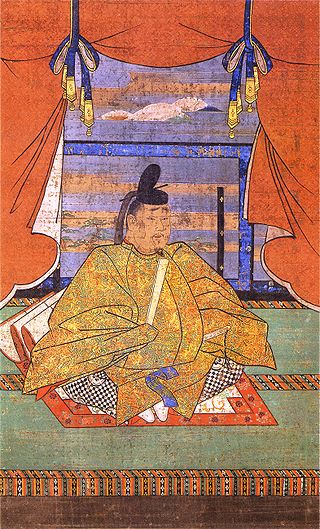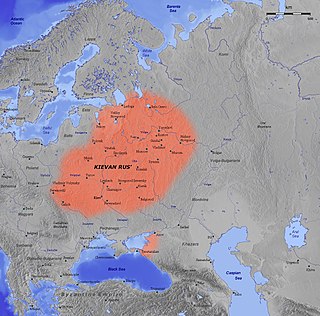Sources
- Gay, Jules. L'Italie méridionale et l'empire Byzantin: Livre II. New York: Burt Franklin, 1904.
Marinus II (died 992) was the Duke of Naples from 968 to his death. He was the son and successor of John III and brought Naples back into the Byzantine fold, receiving the title eminentissimus consul et dux, atque imperialis anthipatus patricius . In 970, Marinus did homage for his duchy to the Byzantine patrician Eugene after the imprisonment of Pandulf Ironhead. He then participated in the siege of Capua. He devastated the surrounding countryside and took an enormous booty before an army of Otto I, Holy Roman Emperor forced the Greeks to retreat. In 974, Marinus allied with Manso I of Amalfi and Landulf of Conza to depose Gisulf I of Salerno. They were defeated, however, by the intervention of Pandulf Ironhead. On 4 November 981, the Emperor Otto II was in Naples, probably with the permission of Marinus, who was moving away from his pro-Byzantine policy. He was succeeded by his son Sergius III.
In 975, Marinus made a donation to the urban church of Saints Severinus and Sossus in Naples. [1]
The 960s decade ran from January 1, 960, to December 31, 969.

Year 969 (CMLXIX) was a common year starting on Friday of the Julian calendar, the 969th year of the Common Era (CE) and Anno Domini (AD) designations, the 969th year of the 1st millennium, the 69th year of the 10th century, and the 10th and last year of the 960s decade.

Year 967 (CMLXVII) was a common year starting on Tuesday of the Julian calendar.

Year 968 (CMLXVIII) was a leap year starting on Wednesday of the Julian calendar.

Otto II, called the Red, was Holy Roman Emperor from 973 until his death in 983. A member of the Ottonian dynasty, Otto II was the youngest and sole surviving son of Otto the Great and Adelaide of Italy.


The Duchy of Benevento was the southernmost Lombard duchy in the Italian Peninsula that was centred on Benevento, a city in Southern Italy. Lombard dukes ruled Benevento from 571 to 1077, when it was conquered by the Normans for four years before it was given to the Pope. Being cut off from the rest of the Lombard possessions by the papal Duchy of Rome, Benevento was practically independent from the start. Only during the reigns of Grimoald and the kings from Liutprand on was the duchy closely tied to the Kingdom of the Lombards. After the fall of the kingdom in 774, the duchy became the sole Lombard territory which continued to exist as a rump state, maintaining its de facto independence for nearly 300 years, although it was divided after 849. Benevento dwindled in size in the early 11th century, and was completely captured by the Norman Robert Guiscard in 1053.

Pandulf I Ironhead was the Prince of Benevento and Capua from 943 until his death. He was made Duke of Spoleto and Camerino in 967 and succeeded as Prince of Salerno in 977 or 978. He was an important nobleman in the fight with the Byzantines and Saracens for control of the Mezzogiorno in the centuries after the collapse of Lombard and Carolingian authority on the Italian Peninsula. He established himself over almost the whole of the southern half of Italia before his death in March 981.

Pandulf IV was the Prince of Capua on three separate occasions.

The Duchy of Gaeta was an early medieval state centered on the coastal South Italian city of Gaeta. It began in the early ninth century as the local community began to grow autonomous as Byzantine power lagged in the Mediterranean and the peninsula due to Lombard and Saracen incursions.
Pandulf II the Old was the prince of Benevento from 981 and prince of Capua from 1008 or 1009 to his death, and was the son of Landulf III who was co-prince between 959 and 968. Pandulf was first associated as co-prince in 977.
Gisulf I was the eldest son of Guaimar II, Lombard Prince of Salerno, and his second wife Gaitelgrima. He was associated with his father as ruler in 943 and succeeded him on his death in 952. He took to using the title Langobardorum gentis princeps, "prince of the people of the Lombards". He was originally under the regency of his mother and Prisco (Priscus), treasurer and count of the palace.

Manso I was the duke of Amalfi (966–1004) and prince of Salerno (981–983). He was the son of Duke Sergius I and the greatest independent ruler of Amalfi, which he controlled for nearly half a century. He is sometimes numbered Manso III.
Landulf IV was the prince of Capua and Benevento from 968, when he was associated with his father, Pandulf Ironhead, and prince of Salerno associated with his father from 977 or 978. In 968, his uncle Landulf III died, which lead to his rise, as Pandulf ignored the rights of Landulf II's son Pandulf II, his nephew, and instead associated his own son with the government.
Landulf III was Prince of Capua and Benevento from 959 as co-prince with his father, Landulf II, and brother Pandulf Ironhead. In 961, he would be co-prince with only his brother after the death of his father. His mother was Yvantia.
The dukes of Naples were the military commanders of the ducatus Neapolitanus, a Byzantine outpost in Italy, one of the few remaining after the conquest of the Lombards. In 661, Emperor Constans II, highly interested in south Italian affairs, appointed a Neapolitan named Basil dux or magister militum. Thereafter a line of dukes, often largely independent and dynastic from the mid-ninth century, ruled until the coming of the Normans, a new menace they could not weather. The thirty-ninth and last duke, Sergius VII, surrendered his city to King Roger II of Sicily in 1137.
John III was the longest-reigning Duke of Naples (928–968). He was the son and successor of Marinus I.


The Principality of Capua was a Lombard state centred on Capua in Southern Italy. Towards the end of the 10th century the Principality reached its apogee, occupying most of the Terra di Lavoro area. It was originally a gastaldate, then a county, within the principality of Salerno.
Landulf of Conza, a Lombard nobleman, was briefly Prince of Benevento in 940 and then briefly Prince of Salerno in 973. The son of Atenulf II of Benevento, Landulf ruled on his father's death (940) as co-prince with his uncle, Landulf I, who soon sent him into exile. He initially took refuge at the court of Marinus II of Naples, from where he sought shelter in Salerno through his sister, Gaitelgrima, the second wife of Prince Guaimar II of Salerno. This he received and he was soon appointed gastald of Conza, while his sons—Landenulf, Landulf, Indulf, and Guaimar—were invested with land in Salerno. The Chronicon Salernitanum, which is the most important source for Landulf's life, names the counties of Marsi, Sarno, and Lauro as those of Guaimar, Indulf, and Landenulf, respectively, but does not name a county for Landulf.